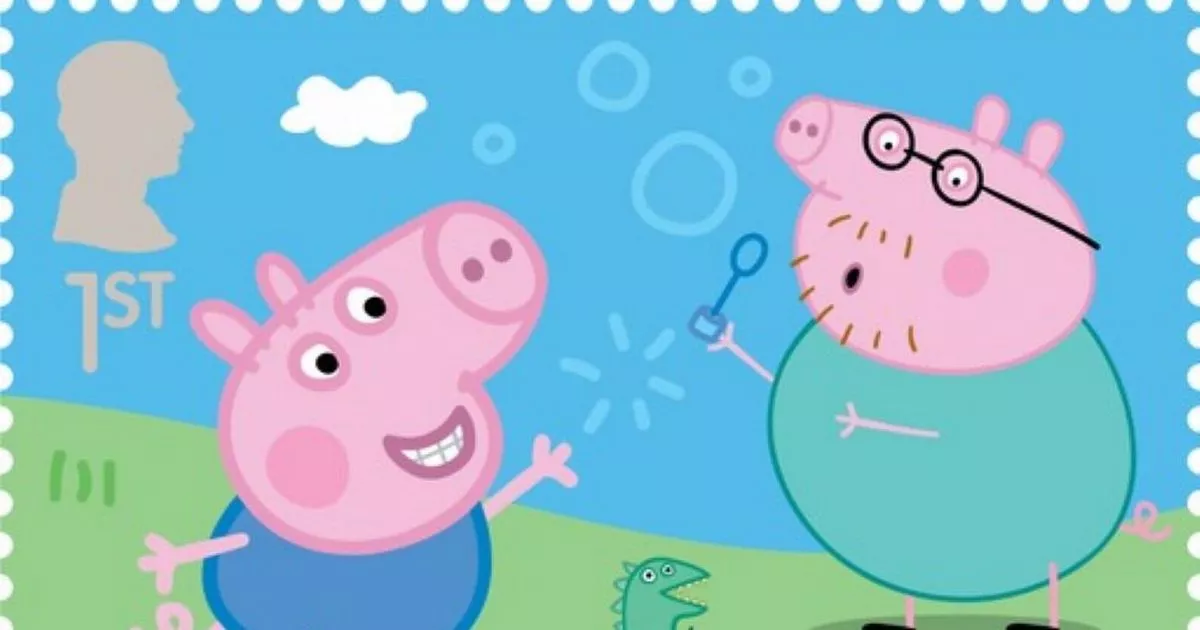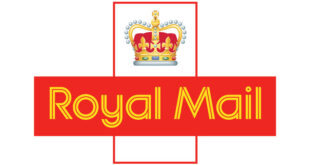By David Hartwig
An April 16 set of 10 stamps issued by Great Britain’s Royal Mail celebrates 100 years since the United Kingdom issued its first commemorative stamp in April 1924.
Royal Mail presents these stamps in two se-tenant (side-by-side) strips of five, with all 10 stamps valued at the first-class rate (currently £1.35).
Each stamp in the set of 10 shows three commemorative stamps issued around the same time in the past century, and most of the stamps show three examples issued within the same decade.
The earliest commemorative shown on a stamp is the British Lion and George V stamp (Scott 185) issued April 23, 1924, for the British Empire Exhibition.
According to a presentation pack included with the stamp issue, Britain planned the exhibition to challenge the domination of new world powers at the same time as the image of the British empire was being questioned globally.
King George V, an avid stamp collector, was initially uncertain about the idea of having a stamp to commemorate the event, as he found the idea of a commemorative stamp issue “un-English” and “copied from America.”
The other commemoratives shown on the first stamp are the St. George Slaying the Dragon stamp (Scott 209) issued May 10, 1929, and the May 7, 1935, Silver Jubilee Issue stamp (229).
Next, a stamp shows the King George VI and Queen Elizabeth Royal Silver Wedding stamp (Scott 267) issued April 26, 1948; a May 6, 1940, stamp (255) celebrating the centenary of the first adhesive postage stamps by showing Victoria and George VI; and a stamp (265) from the June 11, 1946, Peace and Reconstruction issue.
The third stamp shows the July 7, 1960, Postboy on Horseback commemorative (Scott 375) issued to mark the tercentenary of the General Letter Office; a stamp issued June 3, 1953, to celebrate the Coronation of Queen Elizabeth II (315); and a stamp (291) issued May 3, 1951, showing a symbol for the Festival of Britain.
According to the presentation pack, the 1950s saw only five commemorative issues. The Coronation of Queen Elizabeth II stamp is one of only three coronation commemorative issues ever issued by Great Britain, with the others being for King George VI (Scott 234) and King Charles III (4365).
The next stamp shows commemoratives issued in the 1960s, with a Landscape stamp (Scott 455) issued May 2, 1966; a July 1, 1969, Investiture of HRH The Prince of Wales stamp (599) and a stamp (393) issued May 16, 1963, for National Nature Week.
The 1960s saw a change in stamp production and design, due in part to a relationship between the General Post Office (later Royal Mail) and David Gentleman. In a career spanning nearly 40 years, Gentleman would go on to design more than 100 stamps for Great Britain. Royal Mail previously showcased several of the stamps designed by Gentleman on a sheet of six stamps (Scott 4202) issued Feb. 18, 2022.
The presentation pack notes that since the 1960s literature, music, film and television have become common themes in commemorative designs. The natural world, the pack says, has been a theme since the earliest days of commemorative stamps.
The final stamp on the first se-tenant strip of five features a stamp commemorating the Philympia 70 Stamp Exhibition (Scott 643) issued Sept. 18, 1970; a Brown Hare stamp (817) from the Oct. 5, 1977, Wildlife Protection issue; and a March 2, 1977, stamp (808) issued to honor British chemists Archer J. P. Martin and Richard L. M. Synge, who won the 1952 Nobel Prize in chemistry.
A commemorative from the Jan. 20, 1987, Flowers set (Scott 1168) shows a Gaillardia flower on the first stamp of the remaining se-tenant strip of five. The stamp also depicts a commemorative from a Feb. 18, 1986, set that marks the passing of Halley’s Comet (1135) and the Queen Elizabeth ocean liner can be seen on a stamp (1214) from the May 10, 1988, Transport and Communications issue.
The commemoratives depicted on the next stamp round out the millennium. One issued Jan. 25, 1996, honors poet Robert Burns (Scott 1640); a stamp issued Jan. 12, 1999, commemorates Timekeeping as a British achievement during the past 1,000 years (1839); and a stamp from the June 10, 1997, Architects of the Air issue (1758) shows a Supermarine Spitfire and the face of R.J. Mitchell in the clouds.
The following stamp shows commemoratives ushering in the new millennium, with a stamp (Scott 1964) from a March 13, 2001, Weather set; a stamp issued Nov. 8, 2007, showing a poppy flower and soldiers (2530), which, according to the presentation pack, “highlights the incredible impact that can be achieved within the small space of a stamp;” and a stamp (2400) from the Oct. 3, 2006, Musicians and Dancers set.
A Landmark Buildings commemorative (Scott 3624) issued July 13, 2017, appears on the next stamp, along with a Pride and Prejudice stamp (3136) issued as part of a Feb. 21, 2013, Jane Austen set and a stamp issued July 9, 2020, in celebration of the band Queen (3994).
In the 2020s we’ve seen the commemoratives depicted on the final stamp in the set of 10, with one issued Feb. 4, 2022, to celebrate the Platinum Jubilee of Queen Elizabeth II (Scott 4194); one showing a painted lady butterfly (4031) and issued Oct. 1, 2020; and one issued June 22, 2023, to mark 75 years since the arrival of the MV Empire Windrush, which carried several hundred West Indian migrants to the United Kingdom.
The April 16 stamps were designed by hat-trick design and printed by Cartor Security Printers by lithography. The stamps measure 41 millimeters by 30mm and are perforated gauge 14.5 by 14.
Each of the two horizontal se-tenant strips is available in sheets of 50 stamps and sold in panes of 25 at most postal outlets.
Royal Mail offers a first-day cover franked with all 10 stamps and canceled with one of two available postmarks. One postmark is from Tallents House and one is from Wembley, the suburb of London that hosted the British Empire Exhibition starting in 1924.
A presentation pack included with the issue contains all 10 stamps in the set and a brief history of commemorative stamps.
Other related products include 10 different postcards, each showing enlargements of one of the stamps in the set of 10, and a collectors sheet with each of the 10 stamps accompanied by a label showing a postmark contemporaneous with the time period of the three stamps depicted.
The stamps and related products can be ordered from Royal Mail’s website. Ordering information also is available from Royal Mail, Tallents House, 21 S. Gyle Crescent, Edinburgh, EH12 9PB, Scotland.
Connect with Linn’s Stamp News:
Sign up for our newsletter
Like us on Facebook
Follow us on Twitter



